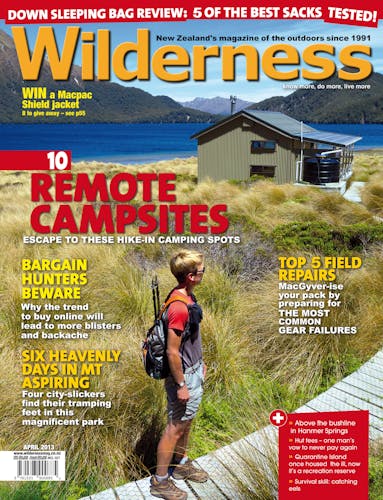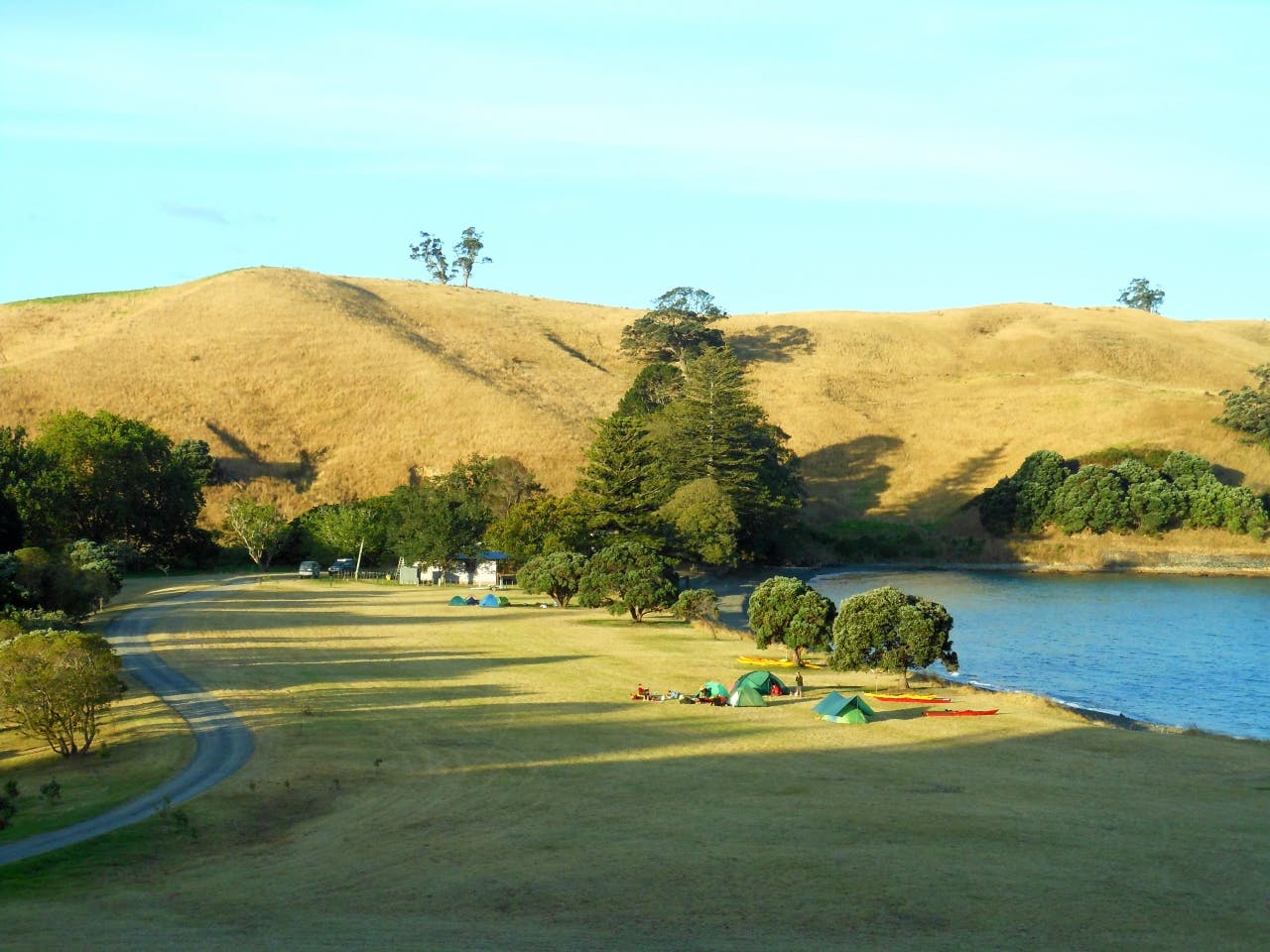- Time
- Up to 2hr to walk from Rangitoto Wharf to Home Bay.
- Grade
- Easy
- Accom.
- Home Bay Campsite (adults $6, children $3). Toilets, drinking water
- Access
- By kayak or ferry to Motutapu or Rangitoto from Auckland City
- Map
- BA32
Home Bay, Motutapu Island, Hauraki Gulf Marine Reserve
Camping at Home Bay on Motutapu Island on Auckland Anniversary Weekend made me wish I could live for 100 years.
If the work of DOC and the Motutapu Restoration Trust continues, it will be completely reforested and abuzz with native birds by then.
It’s already well on its way.
Motutapu Restoration Trust volunteers have established a nursery on Motutapu with more than 400,000 native trees already planted on the island.
This has created a home for threatened native wildlife and since Rangitoto and Motutapu were declared pest-free a number of native species have been released on to the island.
Takahe, saddleback, shore plover, Coromandel brown kiwi, red-finned bully fish and crayfish have all been released since 2011 and more releases are in the pipeline.
Because of the islands’ size and proximity to Auckland, DOC considers their restoration to be one of its flagship projects and has even floated the idea of creating a multi-day walk across them.
In the meantime, there are several opportunities for stretching the legs from Home Bay campsite. We tried the Rotary Centennial Track and watched shy saddleback and flocks of tui crash through the native regrowth as we made our way to the historic gun emplacements and watched the sun sink over Auckland City. Golden light fell on Rakino Island, only a stone’s throw to the north east.
On our return to Home Bay, a group of sea-kayakers sat together in the dusk eating and drinking. A perfect end to a day’s paddle.








